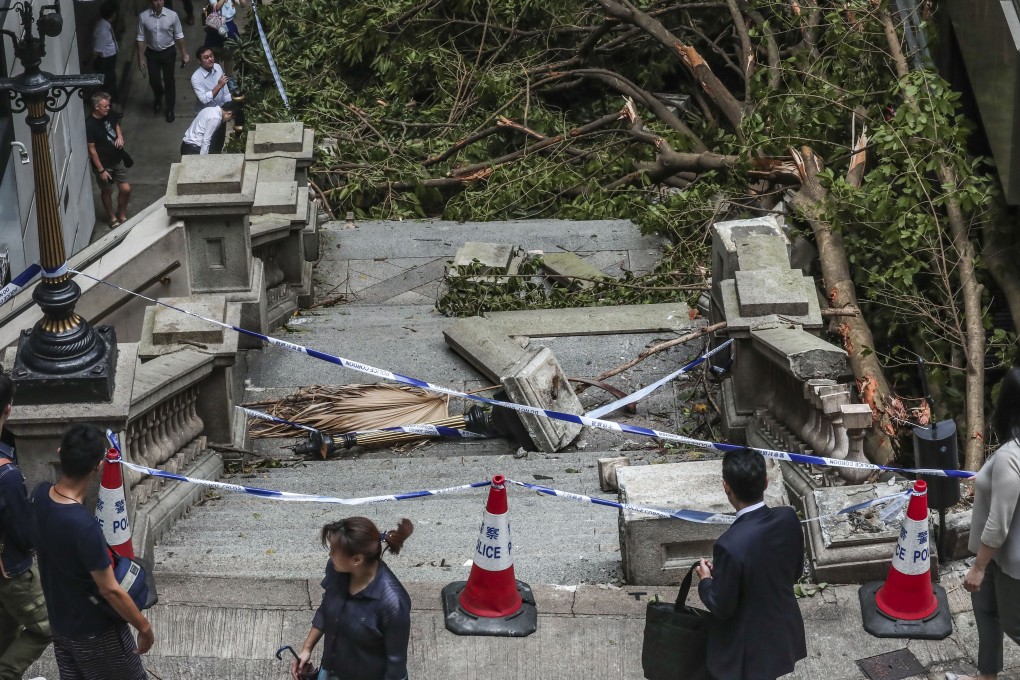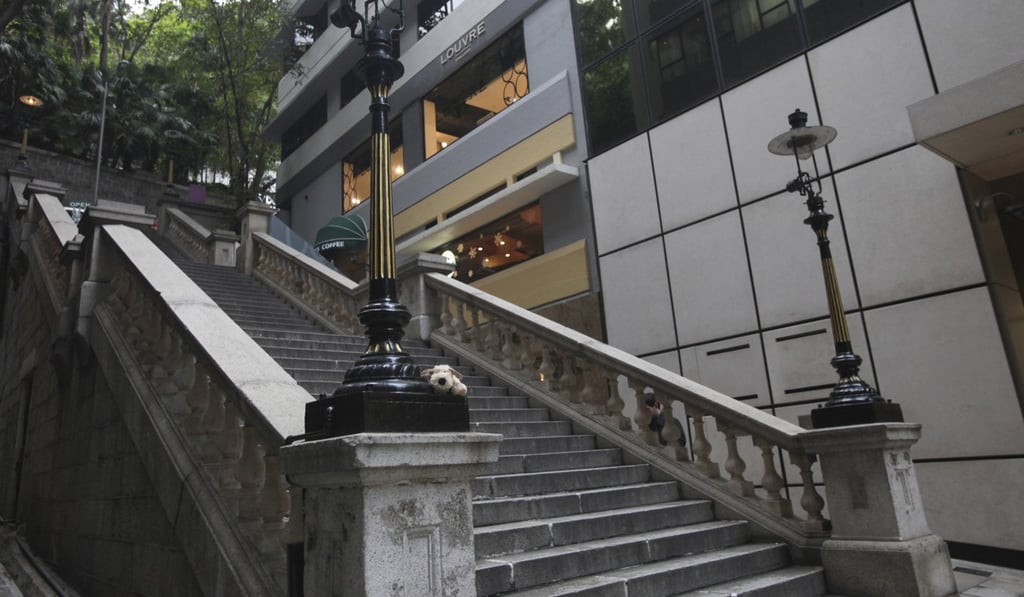Heritage gas lamps that ‘witnessed Hong Kong’s development’ remain in disrepair after Typhoon Mangkhut
- Installations are located at iconic Central site which includes flight of famous stairs often shown in films
- Fallen trees and wrath of monster storm have laid waste to area, as pressure mounts to restore venue’s charm

Four iconic gas lamps in the heart of Hong Kong’s Central remain in disrepair more than three months after they were wrecked by a monster storm, with officials still looking into ways to restore the heritage items.
The sweeping granite stairway on Duddell Street, with its softly glowing gas lamps and classic balustrades, has been the site of numerous scenes of drama and romance in local films and TV shows, including one featuring Cecilia Cheung Pak-chi rushing down the famed steps in Stephen Chow Sing-chi’s 1999 film King of Comedy.
The last remaining gas lamps before the introduction of neon lights, they are one of the 120 declared monuments in Hong Kong, which receive the highest level of government protection.
Andrew Lam Siu-lo, outgoing chairman of the government’s Antiquities Advisory Board, said the monument had to be restored to its original design because of its legal status.

He said officials had briefly informed the board of a maintenance plan.